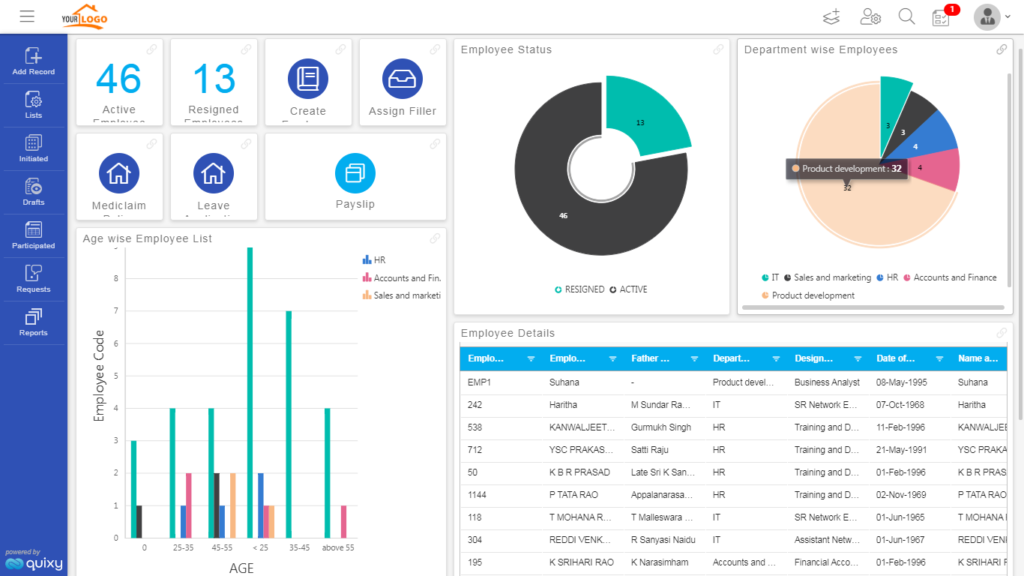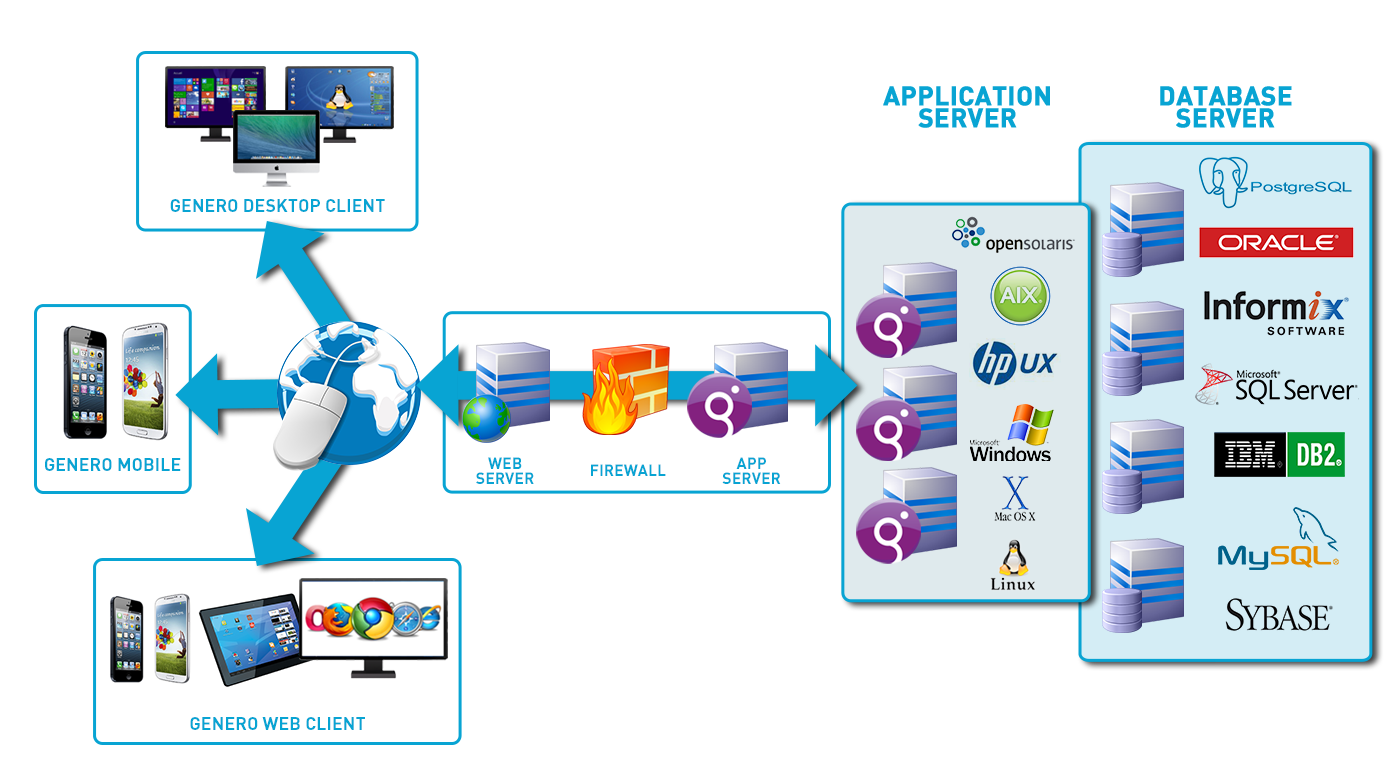Just How No-Code Tools Simplify Open Platform Database Development for Everybody
Just How No-Code Tools Simplify Open Platform Database Development for Everybody
Blog Article
Opening the Prospective of Scalable Data Sources: No Coding Required for Seamless Information Combination and Management
The development of no-code solutions is transforming just how organizations come close to scalable databases, making it possible for smooth information combination and management without the demand for extensive coding abilities. This paradigm shift supplies significant benefits, such as enhanced ease of access for non-technical users and boosted operational effectiveness. As services seek to harness the power of their data, the vital attributes and prominent tools that promote this change warrant closer exam. What ramifications do these developments hold for the future of data-driven decision-making?
Understanding Scalable Data Sources
How do scalable data sources accommodate the growing needs of modern-day applications? Scalable databases are developed to deal with boosting quantities of information and customer demands without sacrificing performance. They achieve this with two key approaches: upright scaling and straight scaling. Upright scaling, or scaling up, involves adding much more resources, such as CPU and RAM, to an existing web server. Alternatively, horizontal scaling, or scaling out, entails including more servers to distribute the load, allowing for greater adaptability and strength.
In addition to scaling techniques, scalable databases usually include sophisticated architectural functions, such as sharding and replication. Sharding separates information right into smaller sized, convenient pieces, allowing parallel processing and lowering feedback times. Duplication makes sure data availability and resilience by producing copies of information across multiple nodes, securing versus prospective data loss.
Moreover, modern-day scalable databases take advantage of cloud computing modern technologies, enabling vibrant source allotment based on need. This versatility enables organizations to react promptly to rising and fall workloads, guaranteeing ideal efficiency and customer experience. As companies significantly count on data-driven decision-making, comprehending scalable data sources becomes crucial for utilizing their potential in sustaining modern-day applications.
Benefits of No-Code Solutions
As companies significantly adopt scalable data sources to manage their growing information needs, the demand for easy to use advancement tools has also surged. No-code remedies are emerging as an essential element in this landscape, offering a number of vital benefits that improve functional performance and ease of access.

Second of all, these options considerably accelerate the growth process. By eliminating the need for coding, organizations can rapidly model applications, iterate on layouts, and deploy options in a portion of the moment required by typical methods. This dexterity makes it possible for services to respond promptly to market needs and altering conditions.
In addition, no-code systems commonly come equipped with pre-built templates and integration capabilities, streamlining the link with existing systems. This reduces the complexity typically connected with data integration, ultimately reducing the total price of possession. As an outcome, organizations can concentrate on leveraging data insights instead than obtaining slowed down in technical intricacies, maximizing their critical capacity.
Secret Features for Information Assimilation
Efficient data assimilation is crucial for companies seeking to harness the full possibility of their scalable data sources. Secret features that facilitate smooth data assimilation include durable information adapters, automated data mapping, and real-time data synchronization.
Durable data adapters allow companies to connect various data sources, whether they stay on-premises or in the cloud, making certain extensive accessibility to varied datasets - no-code. Automated data mapping streamlines the process of straightening inconsonant information formats and frameworks, enabling for quicker and more precise integration processes. This attribute lessens the need for hands-on intervention, reducing the possibility for mistakes
Real-time data synchronization is one more critical feature that ensures information uniformity throughout platforms. By updating information in real-time, organizations can keep a accurate and updated view of their information landscape, which is vital for prompt decision-making. In addition, user-friendly control panels and visual analytics improve the visibility of integrated information, permitting stakeholders to obtain workable insights effortlessly.
Last but not least, data administration capabilities guarantee conformity with policies and internal policies, protecting delicate information while advertising a society of information stability. Jointly, these functions encourage organizations to achieve reliable and reliable data combination.
Popular No-Code Equipment Available
Organizations significantly rely on no-code devices to boost their information assimilation procedures and simplify operations. These systems remove the demand for extensive programming understanding, allowing individuals to produce applications and handle data with user-friendly aesthetic user interfaces. Amongst one of the most preferred no-code devices are Airtable, Zoho Designer, and Bubble, each offering one-of-a-kind attributes customized for different company needs.
Airtable combines the simplicity of spread sheets with the performance of databases, allowing users to work together and organize on data successfully. Zoho Designer offers a comprehensive suite of personalized applications, making it possible for customers to incorporate and automate workflows with various other Zoho items seamlessly. Bubble sticks out for its ability to create innovative web applications without coding, catering to enterprises and start-ups alike.
Furthermore, tools like Zapier and Integromat facilitate computerized operations by incorporating several applications, allowing individuals to connect information resources effortlessly. These no-code solutions not just save time yet also encourage groups to concentrate on critical efforts instead of technological hurdles. As companies remain to embrace digital makeover, the adoption of no-code devices is readied to reinvent the means data assimilation and management are approached, driving effectiveness and development.
Real-World Usage Cases
Numerous markets have actually effectively implemented no-code tools to attend to specific difficulties and enhance operational performance. In the medical care market, for circumstances, carriers use no-code platforms to enhance patient record administration and appointment organizing. By integrating different information resources without considerable coding, healthcare professionals can focus a lot more on person care as opposed to administrative tasks.
In retail, services utilize no-code databases to manage stock and sales data in genuine time. no-code. This enables for fast decision-making pertaining to supply degrees and promotional approaches, ultimately enhancing consumer contentment and sales performance
Moreover, banks have embraced no-code services to automate compliance reporting and data analysis, decreasing hands-on errors and speeding up action times to governing adjustments.

These real-world use instances illustrate the adaptability and efficacy of no-code tools in numerous markets, verifying that scalable databases can drive his comment is here advancement and functional effectiveness without the requirement for comprehensive programs understanding.
Verdict
In conclusion, the assimilation of no-code options into scalable data More about the author source monitoring stands for a significant advancement in information dealing with abilities. By promoting smooth links in between varied information sources and automating workflows, these tools equip organizations to efficiently handle expanding information volumes without the requirement for technical knowledge. The resultant improvement in functional performance and data-driven decision-making emphasizes the transformative possibility of these cutting-edge strategies within numerous fields, inevitably sustaining strategic objectives and promoting organizational growth.
Replication guarantees data accessibility and toughness by developing duplicates of information throughout numerous nodes, securing against potential data loss. - no-code
Robust data ports make it possible for organizations to connect various data sources, whether they live on-premises or in the cloud, making sure detailed access to varied datasets. Automated information mapping simplifies the process of straightening inconsonant data formats and frameworks, permitting for quicker and extra precise combination procedures.Real-time information synchronization is another critical attribute that makes sure information consistency across systems. By helping with smooth connections between diverse information sources and automating operations, these devices reference equip companies to efficiently take care of growing information volumes without the need for technological know-how.
Report this page